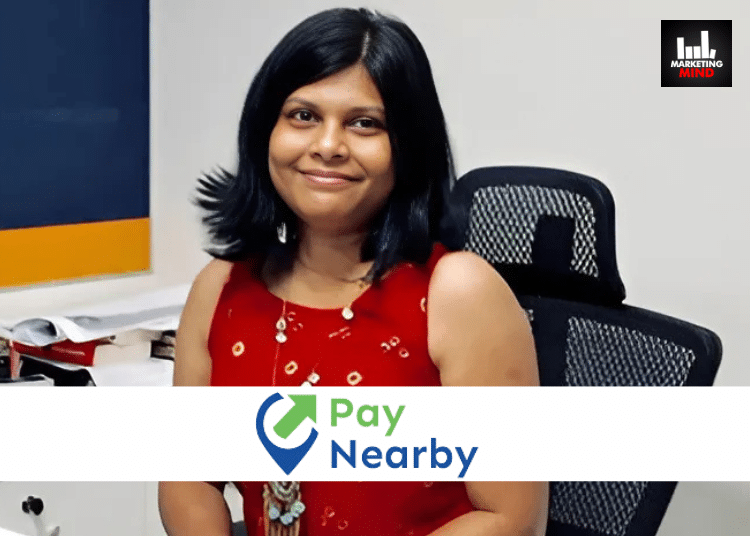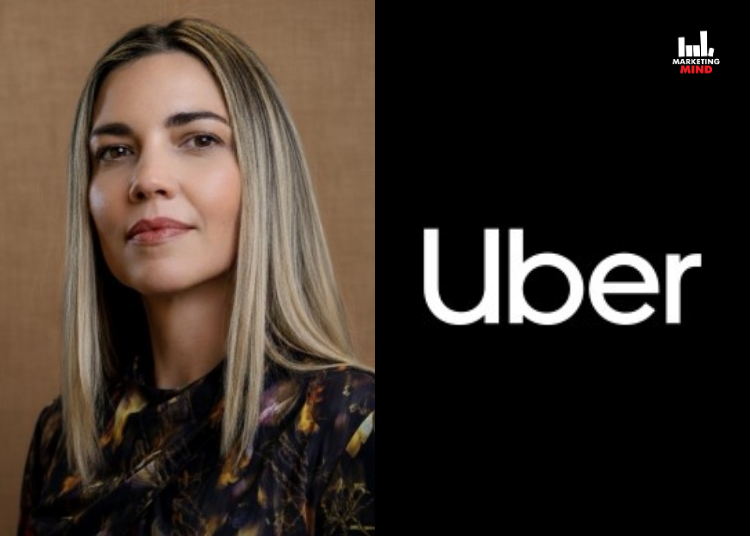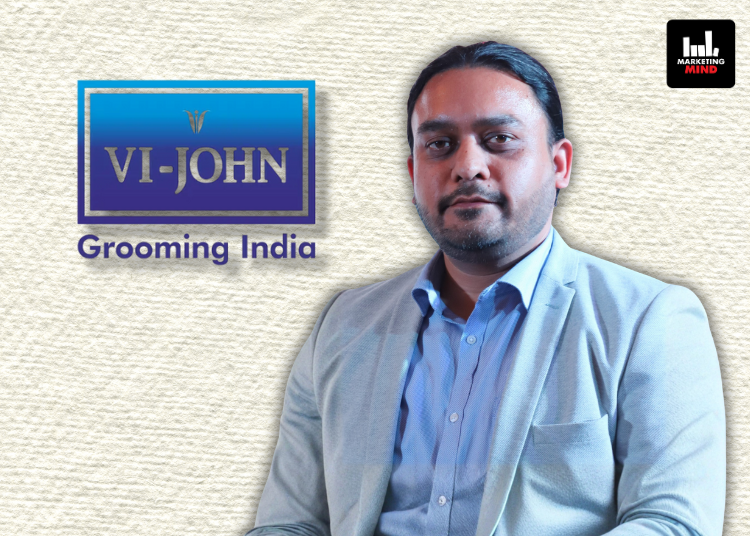PayNearby’s extensive network spans 93% of ‘Bharat,’ delivering a platform that simplifies tech solutions for seamless last-mile adoption, Chief Marketing Officer (CMO), Jayatri Dasgupta, said while highlighting that a dedicated network of women influencers has also been established by the company to make financial services more accessible for last-mile women, a central focus of the ‘Digital Naari’ programme.
Earlier this year, PayNearby, a branchless banking and digital network, unveiled the Digital Naari platform that aims to generate long-term self-employment for women across ‘Bharat’.
Explaining the vision and mission driving this initiative, along with the platform’s current standing in terms of growth and impact, Dasgupta, who is also the Business Head for Digital Naari, shared that the founding vision for Digital Naari was twofold. First, it aimed to extend financial services to last-mile women because the growth of a nation hinges on enabling the full potential of its population, which includes the 50% represented by women.
While initiatives like Jan Dhan Yojana and other government and industry efforts have helped banks reach remote areas, a significant gender gap remains in the actual use of banking services. This gap isn’t limited to account usage, it also spans access to capital, investments, and assets, where women are noticeably disadvantaged, she added.
“Our ongoing annual research over the last few years has consistently highlighted that while programs like business correspondence exist to facilitate services in remote areas, women often face discomfort when approaching male representatives, particularly in rural interiors. Findings strongly suggest that if another woman, a female influencer, acts as the service facilitator, other women feel more comfortable and confident accessing financial support. This insight led to our focus on creating a network of women influencers to ease and encourage access to financial services for last-mile women, which remains a core priority of the program,” Dasgupta said.
“Additionally, by empowering these women influencers, we are not only enhancing service accessibility but also creating sustainable livelihoods for them. This program provides a long-term employment opportunity, allowing them to support their families while participating in a socially impactful initiative. Our mission is ambitious, we aim to develop a community of two crore Digital Naari by 2030. Achieving this goal would mean sustainable livelihoods for two crore women and transformative progress for countless families. That is where we stand today, with these objectives driving the Digital Naari initiative forward,” she added.
Through these 2 crore women are expected to have a multiplier effect of at least 50, potentially impacting the lives of 50 crore more women with PayNearby’s products and services.
Furthermore, Dasgupta went on to say that they currently have around 1,50,000 women enrolled in this program nationwide, with 60,000 to 65,000 actively participating each month. Last year, this initiative facilitated financial transactions amounting to Rs 10,000 crore.
“This year, with our consolidated efforts, dedicated resources, and a team focused specifically on this program, we anticipate even higher numbers, given the compounded impact of our continued investment. Today, our business generates around Rs 1 lakh crore annually, but as our CEO often emphasises, this is merely the tip of the iceberg,” she added.
At PayNearby, they cater to a broad audience, including retailers and enterprises. When asked about key marketing strategies used to engage these groups and how they tailor their approach to resonate with both rural and urban audiences, Dasgupta explained, “A single marketing strategy simply doesn’t work across our varied clientele. The language and tone we adopt for enterprise clients can’t be replicated for our rural audience. Our primary interaction is with retailers, not directly with end consumers, except through in-store assets like posters and signage. Retailers are our key focus, especially since 75-80% of our business comes from rural areas.”
“Our marketing approach is split into two main goals, acquiring retailers efficiently and then engaging with them effectively. Engagement is a vital part of our marketing, particularly given the scale- reaching 1.5 million retailers. Having a dedicated on-ground team for each one is unfeasible, so digital communication becomes essential. However, while using digital channels, it’s crucial to remember that these are business owners who respond to emotional engagement, an overly automated or impersonal tone won’t work. We must keep that emotional element intact,” she added.
Dasgupta highlighted that for engagement, they use an app that provides updates and notifications. They have also developed PayNearby radio as an additional engagement channel, offering content that goes beyond business. Alongside business insights, PayNearby radio shares tips on health, updates from rural India, the latest in technology, and best practices in agriculture and irrigation.
“We are also planning to introduce an entertainment segment. This platform not only aims to help retailers improve their businesses but also enriches their personal lives, supporting them in creating healthier lifestyles and smarter shops. Our marketing communications strategy is heavily supported by voice interactions. We also operate an outbound call centre managed by our growth and marketing team, ensuring that the messaging reflects a customer-first approach rather than merely promoting the product,” Dasgupta said.
She also mentioned that social media plays a crucial role in reaching their audiences, who generally prefer audio-visual content over traditional modes like banners or text ads. This is because the target demographic, largely shop owners, may not have the time or inclination to engage with extensive reading materials.
“Instead, we create emotionally resonant, short, and snackable content that is easy for them to consume. For example, radio is an effective medium, allowing shopkeepers to listen to relevant content via earbuds while they work, making it both accessible and engaging,” she said.
“For customer acquisition, we rely significantly on a feet-on-street approach, with 50-60% of acquisitions driven by our field team. The marketing team supports this effort by equipping them with the necessary materials, such as videos, leaflets, and pamphlets, to communicate effectively with retailers. Surprisingly, digital marketing also plays a substantial role in retail acquisition. When I joined five years ago, I hadn’t anticipated digital marketing to be so impactful in the retail space, especially in rural areas. Yet, about 40% of our retail acquisition is achieved through digital channels, including Google, app download campaigns, and Facebook. This approach has proven to be a cost-effective way of onboarding retailers,” she added.
Dasgupta pointed out that however, as they operate within financial services, a crucial part of the process is the physical verification phase. This ensures that every business is properly vetted before they are authorised to transact with them, adding an essential layer of security to their acquisition process.
With omnichannel marketing gaining prominence in today’s landscape, Dasgupta highlighted its crucial role in fostering customer loyalty. She shared insights into how brands like PayNearby strategically leverage this approach to enhance engagement across multiple touchpoints.
“Our lives are constantly touched by 20 different things, across 20 different media modes, all at once. If each of these speaks a different language, how can we establish emotional connection, brand loyalty, or trust? For us, this coherence is crucial because, as I mentioned, we have “feet on the street” onboarding retailers, while app transactions are happening simultaneously,” Dasgupta said.
She added that retailers are interacting with the app 30 to 40 times a day, each time leaving valuable data. They may call customer support with an issue or get an outbound call for product upselling. At each point, they leave behind data traces, far beyond a typical customer who transacts occasionally.
“Through various channels, from print ads to advertorials highlighting retailer success stories, we reach them consistently. Everything we do must stay aligned and interconnected. Omnichannel strategy emphasises micro-movements, small yet significant interactions, which, when seamlessly integrated, form a cohesive narrative for each retailer. Imagine a retailer raises an issue with a banking function. If, the next day, our call centre calls and ignores that problem, instead focusing on upselling, we have immediately created a disconnect,” she said.
She highlighted that omnichannel isn’t just about presence across platforms, it’s about weaving these interactions into a unified story with a consistent tone. This cohesion in data and narrative is essential for effective marketing today.
When asked about the biggest challenges she faces, as a CMO, in driving innovation while remaining aligned with PayNearby’s mission, she pointed out that as the CMO at PayNearby, one of the biggest challenges lies in connecting with their audience in their local languages. The target isn’t limited to just Hindi or English speakers, they are engaging with the grassroots, the base of the pyramid, who feel most at ease in their native tongues. This language choice isn’t just about communication, it’s about building a relationship with their retailers that goes beyond mere transactions.
“We want to foster a sense of trust and belonging, which means speaking in a way that resonates with their emotions and everyday realities. Our audience is incredibly diverse, spanning a vast and varied country like India, with multiple languages and cultural nuances. With over 25 services offered, the demand for content is extensive and complex. Marketing for us is largely driven by content, and in a content-heavy strategy, delivering material consistently in 14 to 15 languages without errors is a substantial task. Each piece of content must be verified for accuracy, tone, and relevance,” she said.
Furthermore, she explained that to address these needs, their team structure and processes are tailored for precision. Even if content isn’t the primary focus of a team member’s role, many of the teammates are multilingual, ensuring that language and tone checks can happen in-house. Additionally, their sales team plays a crucial support role, assisting them with translation and verification whenever needed.
While sharing some experiences of curating marketing campaigns for rural India Dasgupta said, “One of the most significant campaigns I’d like to highlight took place during the COVID-19 pandemic. When COVID hit, our widespread presence across districts nationwide meant that, ordinarily, our team on the ground would handle much of the work directly. However, with movement restricted, marketing had to take on the crucial role of maintaining communication and keeping the channel active. Connecting with rural heartlands required speaking in their language, being relatable, and fostering a sense of community.”
During this time, PayNearby spotlighted powerful success stories, people going beyond their call of duty to help their communities. These individuals became local heroes, inspiring others and keeping the channel resilient, even when banks were closed and access to essential services was limited. This network ultimately ensured that government benefits reached even the most remote areas.
“Advocacy from within our network made a real difference. When individuals shared how they trust the brand with their livelihoods and the impact they’re making, it strengthened the bond with the community. At PayNearby, we’ve developed a structured approach to using these success stories and making community members into local influencers. This encourages others to provide the same level of dedication, creating a ripple effect that enhances service across the board,” Dasgupta said.
PayNearby’s taglines, “Zidd aage badhne ki” and “Chalo Bharat,” have become integral to the brand’s identity, reflecting a commitment to empowering communities across India. Dasgupta emphasised the profound meaning behind these phrases, explaining how they resonate with the company’s mission to drive progress and support local communities.
“When we looked into rebranding our flagship brand, PayNearby, about five years ago, we focused on defining a mission that truly represented who we are. We hired a research agency and engaged in conversations with our retailers and consumers across the country. Through these discussions, a clear insight emerged that India, and even more so, Bharat, is aspirational. People from rural and semi-urban areas are eager to access the same services and lifestyle that urban India enjoys, and this aspiration resonated deeply with our values and the services we offer,” she said.
Furthermore, Dasgupta emphasised that they are an inclusive company at the core. Their mission is to ensure that everything available to urban India reaches the last mile. This is where the tagline, “Zidd Aage Badhne Ki,” was born.
“It represents our commitment to empowering every citizen to live a better life. And our offerings extend far beyond banking, we provide over 25 services, including commerce, to enable people to improve their lives. For our retailers and channel partners, we want them to have the best business opportunities and to see their revenues grow steadily. Our brand vision is to contribute to a national journey toward progress and a better quality of life. That’s what ‘Zidd Aage Badhne Ki’ truly stands for,” she said.
“Additionally, we’ve introduced the tagline ‘Chalo Bharat,’ which embodies a spirit of enterprise and expansion. While there’s tremendous demand for services and brands aiming to reach every corner of India, the challenge remains in cost-effectively reaching the last mile. UPI, for instance, reaches 300-400 million people, but India’s population is 1.4 billion. Our network covers 93% of Bharat, offering a platform that simplifies tech solutions to ensure seamless adoption at the last mile,” she added.
Highlighting the major marketing trends transforming consumer engagement in the fintech space, she explained that today, digital is everywhere, forming the backbone of most modern marketing strategies. Marketers across sectors, whether B2B or B2C, are investing heavily in digital channels. Although traditional media, especially TV and print, still holds significant value, especially for broad audience reach and strategic positioning, digital has become indispensable for most brands, including in the FinTech space.
“For instance, young FinTech brands today allocate roughly 70-80% of their marketing spend toward digital channels. When I joined PayNearby around six years ago, I couldn’t have anticipated that 40% of our retail onboarding would happen through digital performance marketing,” she said.
“But today, our paid advertising efforts are largely digital, complemented by extensive influencer marketing. Like other industries, we utilise both nano-influencers and key personalities, though we approach celebrity endorsements cautiously. Instead of traditional celebrities like Bollywood stars, we focus on influential figures relevant to our vertical. For instance, when engaging with enterprises, we feature CEOs of partner companies, who are notable in our industry, leveraging their audio-visual content to expand our reach,” Dasgupta added.
She also highlighted that in regional markets, they focus on tech-savvy nano-influencers, especially those with strong followings on YouTube, to connect with local audiences. Another major shift has been the rise of content marketing, moving beyond simple ads to smartly integrating our messages within relevant content. Crafting a strong content strategy has become central to our approach, helping PayNearby engage more deeply with audiences.
















